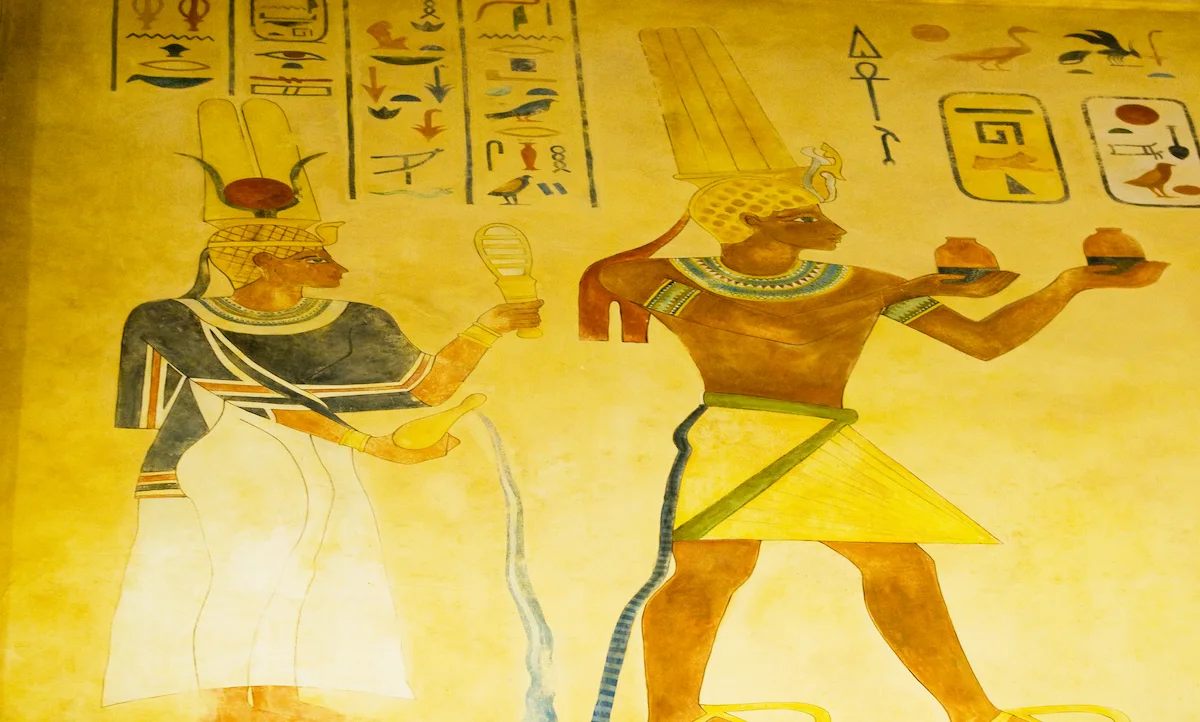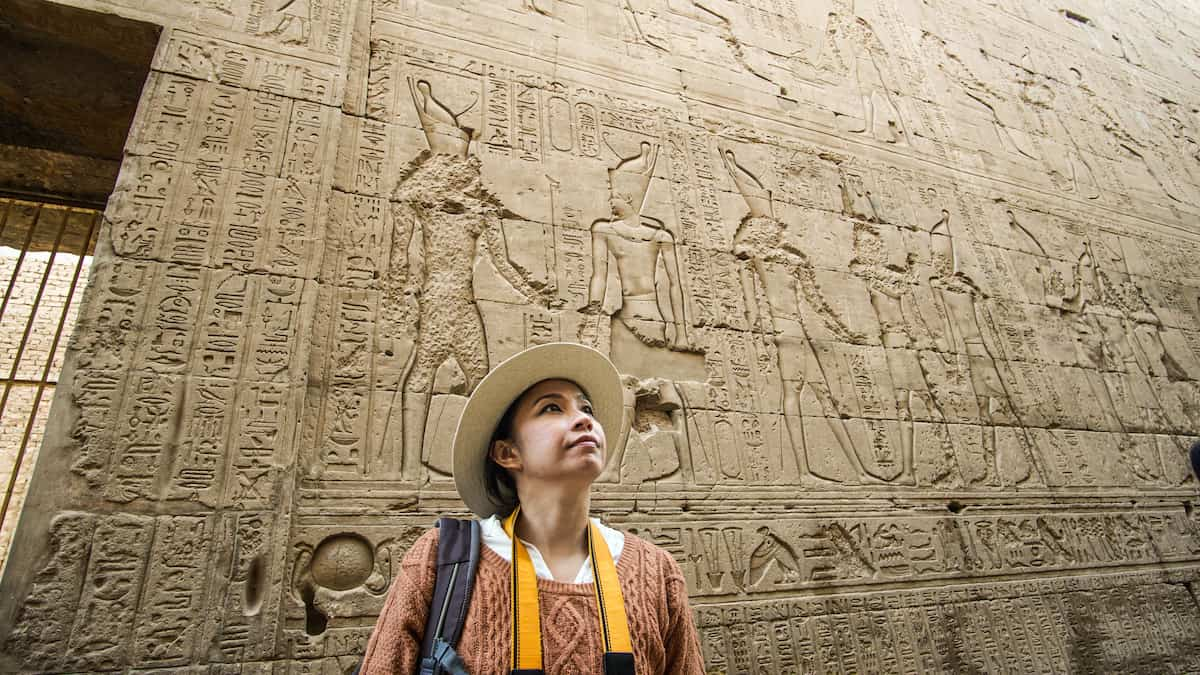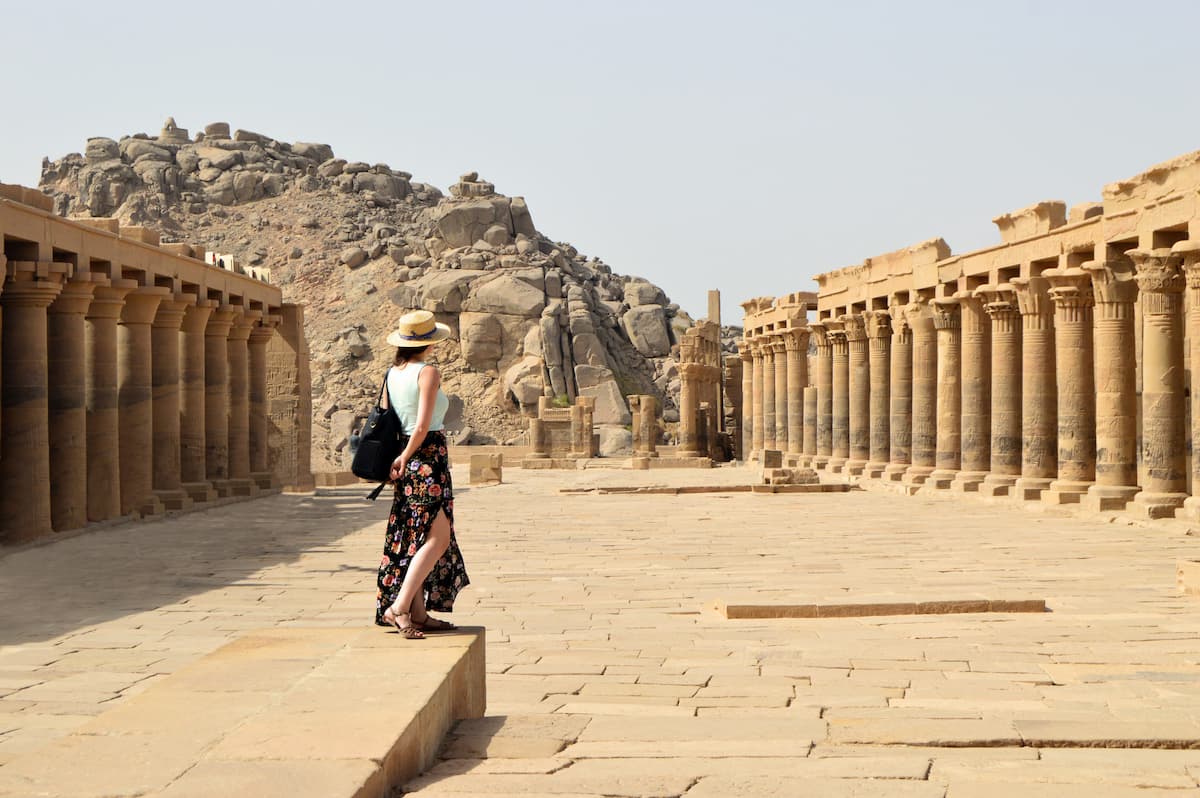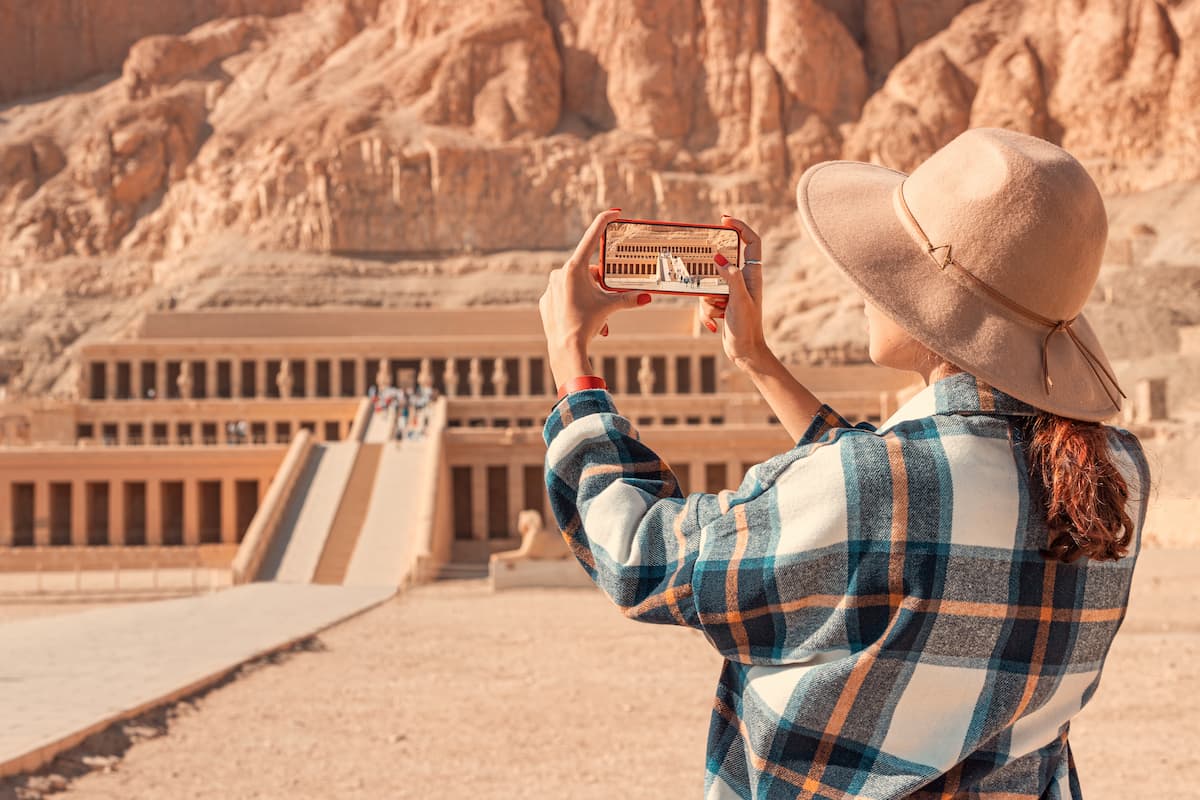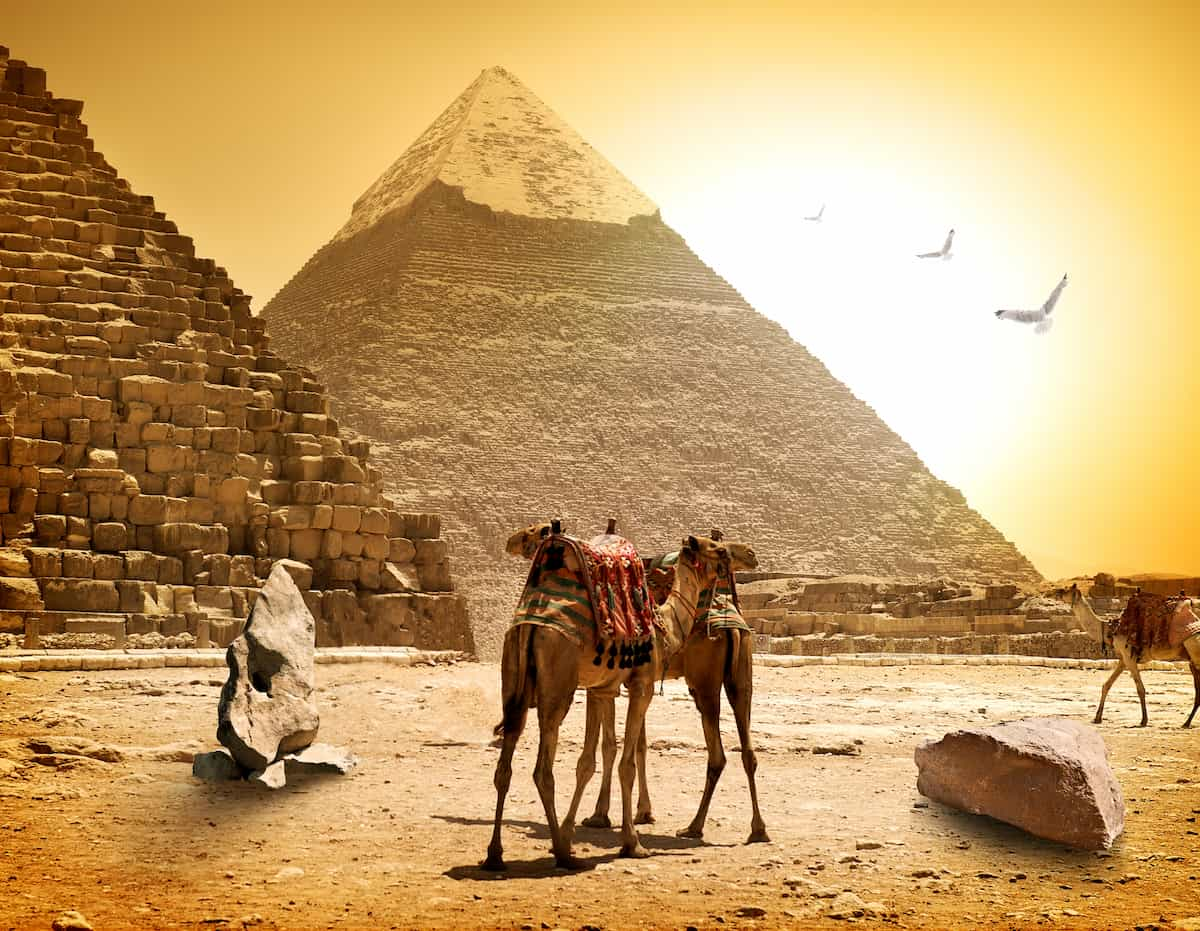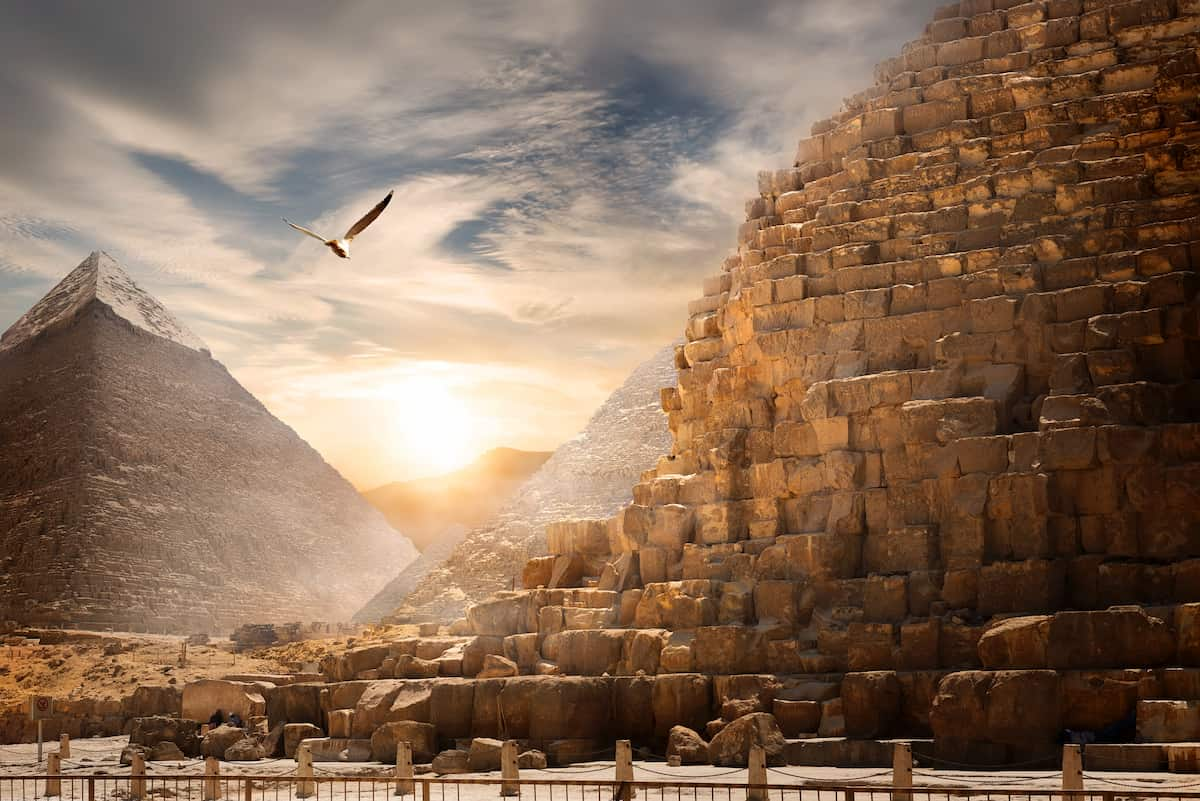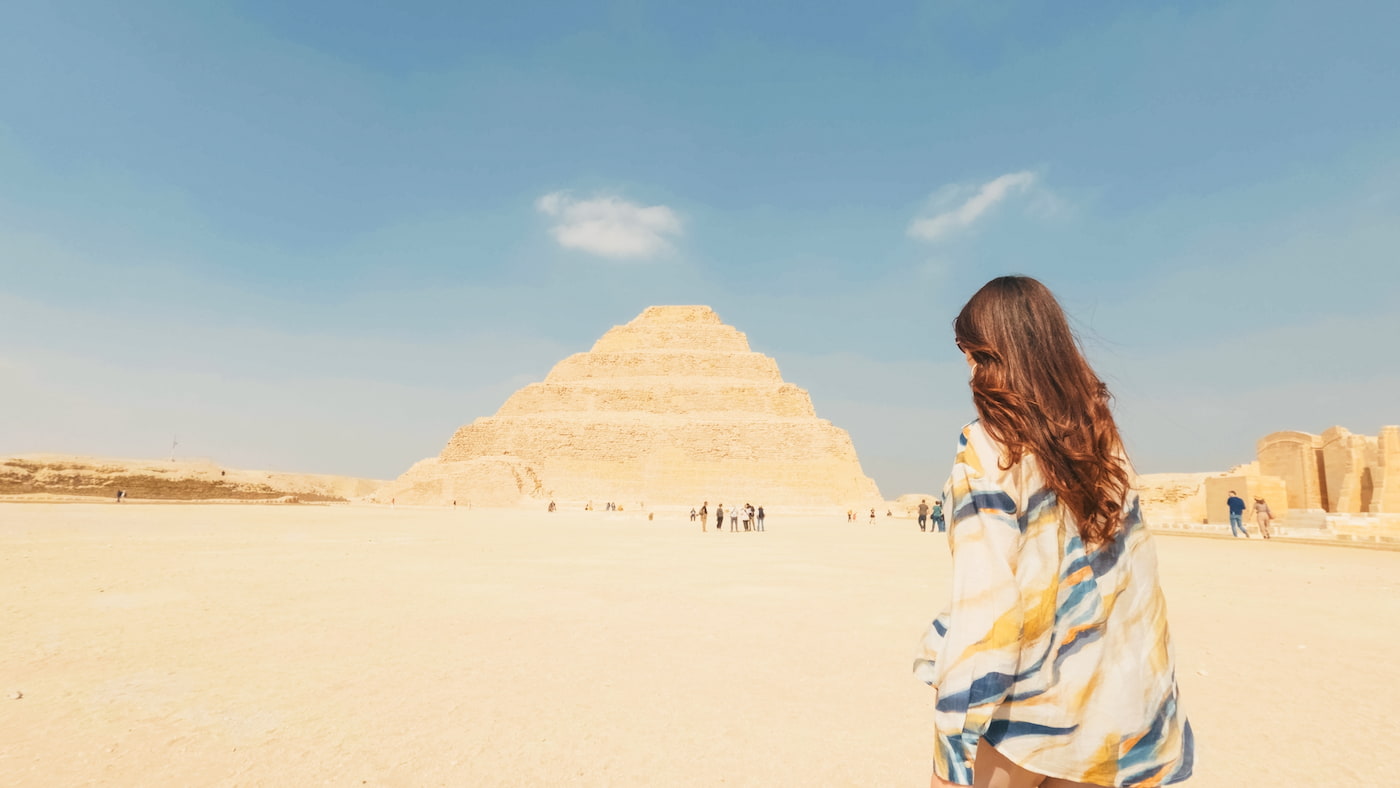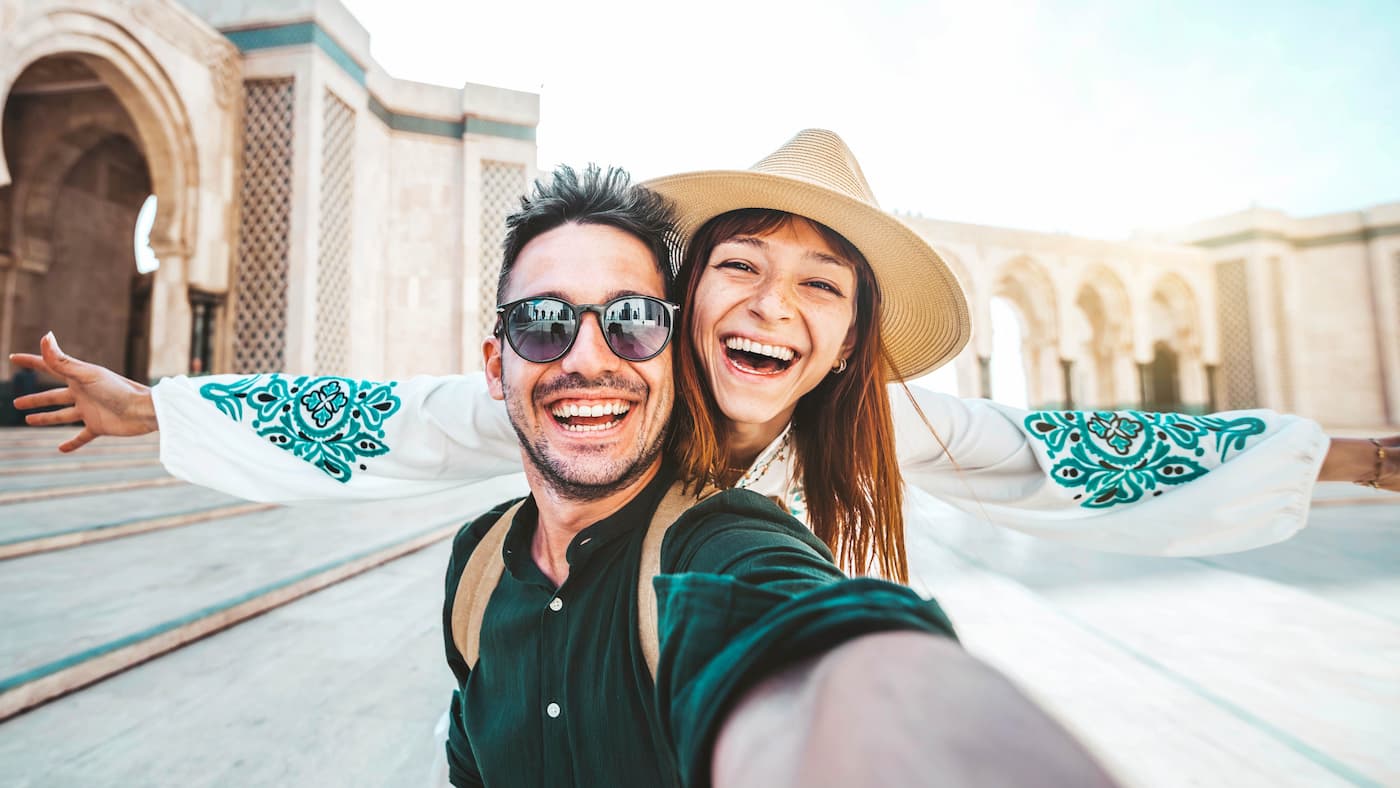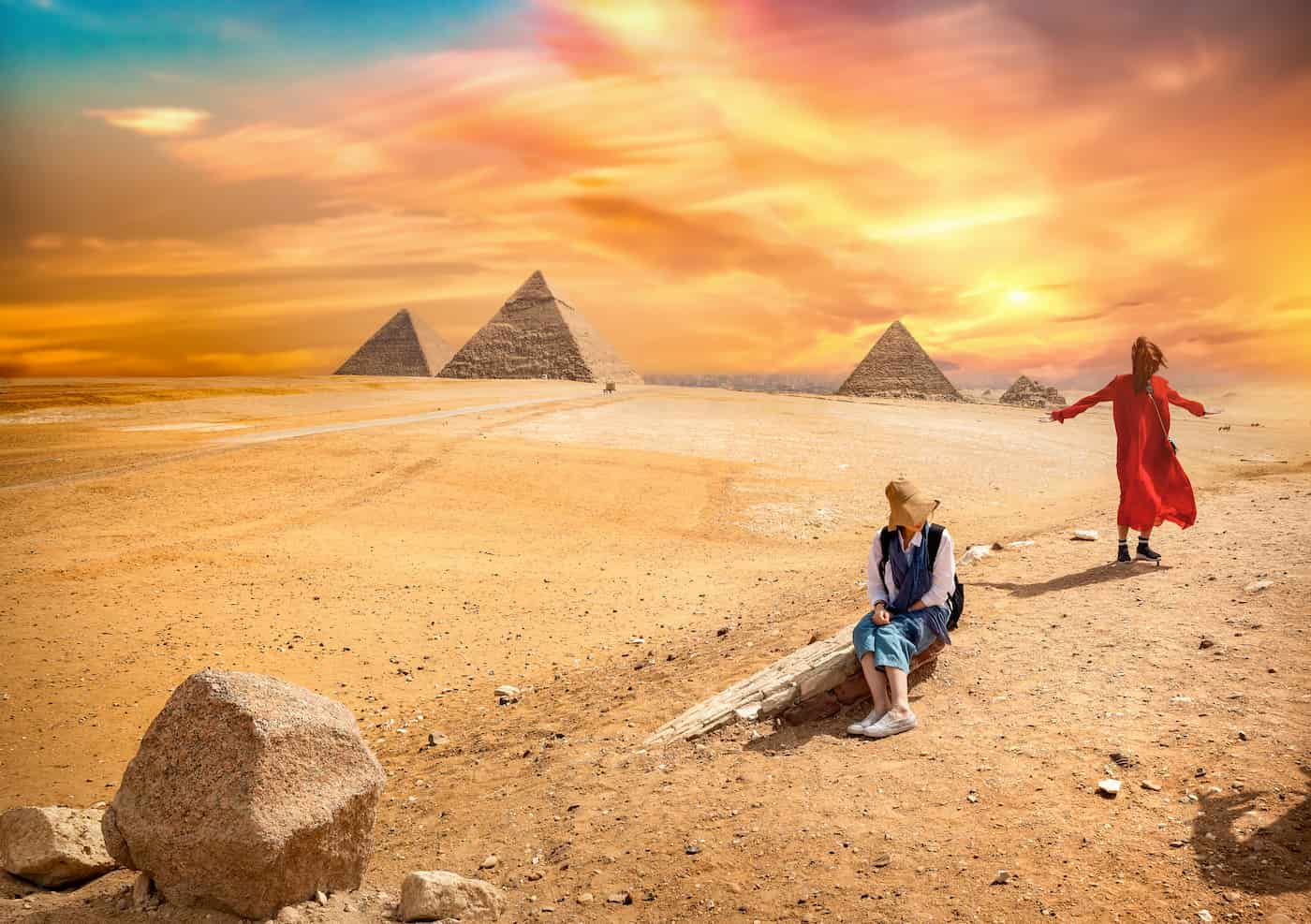The Cultural Role of Ancient Egyptian Clothing
The garments in Ancient Egypt had not been at all stylish they had substance. It served as a means to represent the social status, mirror the surrounding world and it was also a necessary part of the spiritual practices. Egyptian garments evolved during hundreds of years, becoming influenced by the specific climate, religious beliefs and social values of that period.
The clothing was well-crafted to be comfortable in the warm dry climate in Egypt and to signify spiritual and social responsibilities. Even the simple linen clothing and the more complex royal attire, clothing in Ancient Egypt was never mere utilitarianism; it was a statement of strength, of the fact that someone was and that he or she belonged, in a certain way, to a particular culture
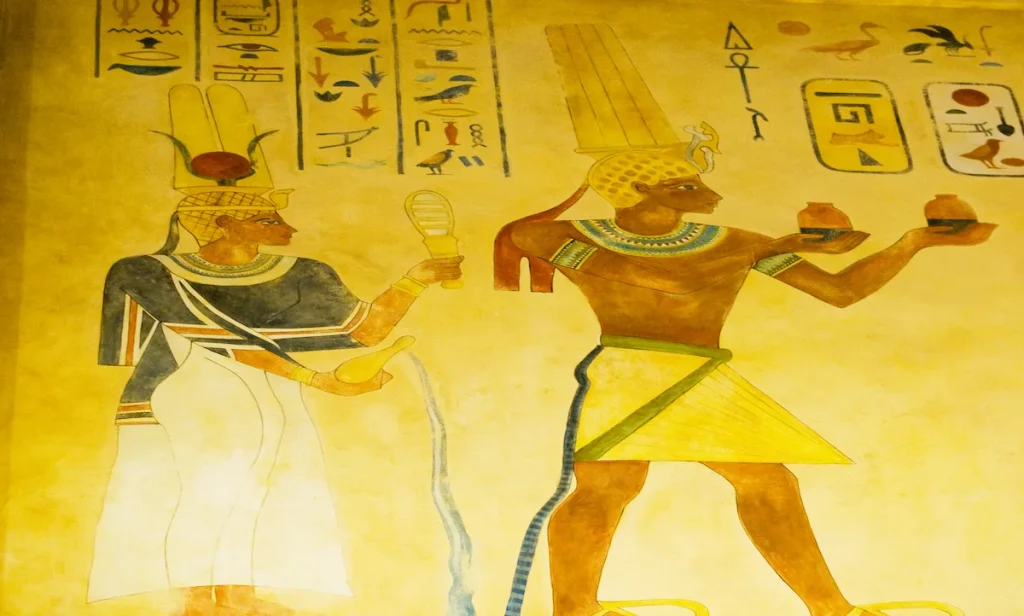
Ancient Egyptian Clothing
In this post we are going to explore further into the various types of Ancient Egyptian clothing, the materials that they worked with and how these pieces of clothing have influenced clothing in the modern world. We are also going to discuss iconic items like the Tutankhamun sandals and see how the garment names in Egypt differentiated various clothes and the social significance to the names.
The Evolution of Ancient Egyptian Clothing

Old Egyptian clothing
The story of Old Egyptian clothing begins around 3100 BCE, when Egypt transitioned from a team of tribes right into a merged and powerful kingdom. The clothing of early Egyptians was easy and useful and was designed primarily to cope with the severe heat. Flax plant was used as bed linen and it was a fabric of choice because it is able to breathe and provide convenience during the hot desert weather. The oldest clothes were utilitarian and were simple, as it was basic garments, skirts and tunics that provided the necessary cover and breezy properties to keep the user cool.
With the rise of Egypt and the growth of its wealth, particularly in the New Kingdom age, clothing became far more elaborate. The Egyptians developed higher levels of weaving and started utilising dyes to produce clothing with a larger colour range. The rich were dressed in finer bed linen and their clothes were woven with beadwork, needlework, and gold. Egyptians of high status began wearing their clothing as a form of expression of their status and luxurious jewellery and footwear became essential components of their wardrobe.
The Tutankhamun sandals are one of the most popular examples of the Old Egyptian style. Golden and decorated with precious stones, these sandals are the symbol of royal luxurious. When citizens dressed in plain linen covers, the elite wore luxurious clothes that connoted to indicate the glorious status of a person and his or her wealth. Eventually, clothing in Egypt became more than a necessity but an element of cultural and religious identity.
The Importance of Linen in Ancient Egyptian Clothing
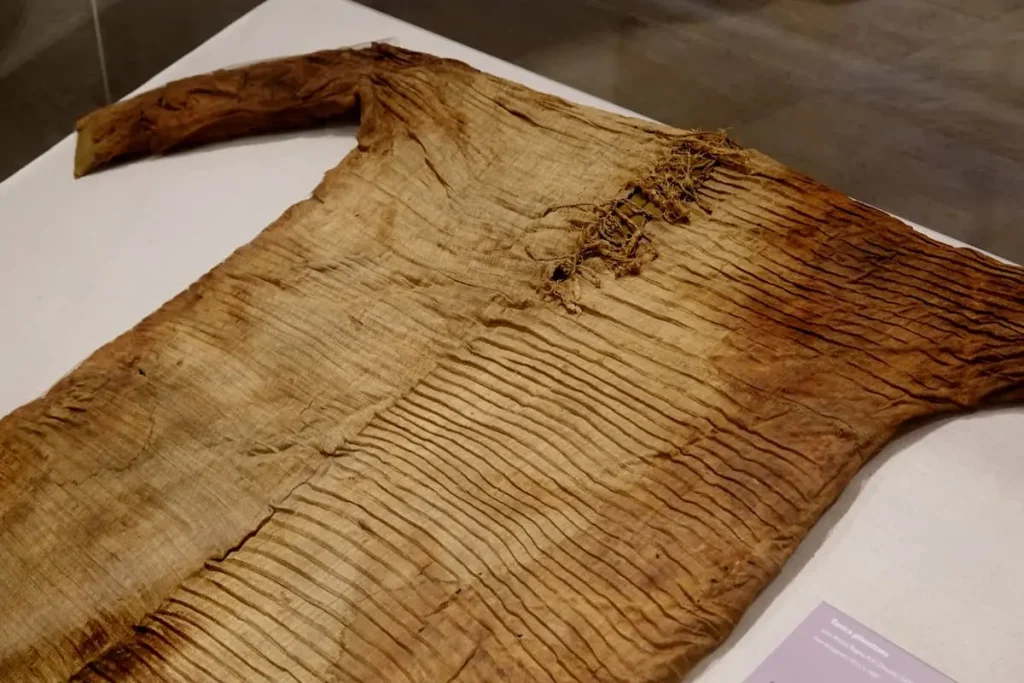
Linen in Ancient Egyptian Clothing
Linen was the material around which the majority of the Ancient Egyptian clothing was made. Ancient Egypt used the flax plant to make linen, which was found on the river banks of the Nile. The plant was harvested, twisted into strands and also woven into cloth. Linen making was a long process and the finer the linen, the longer the time and skills needed to make it.
Linen was very popular in Ancient Egyptian clothes mostly because it was light and could be breathable. Linen could be worn to make the body cool and comfortable in the extreme heat in Egypt. This was particularly significant to the Egyptians, who worked outdoors; a material was required that would make them cool and dry in the sunshine. Due to its practical advantages, linen was applied in regular clothes and in ceremonial ones.
But linen was not considered a worthwhile piece of clothing based only on its functionality. It was strongly cultural and religious. Linen in Ancient Egypt was linked with purity, so priests and royalty tended to wear clothes made of the finest linen. Mostly priests in particular wore linen to keep their spirits clean as they conducted their business in temples. Symbolism also existed in the linen used in funerary rituals, whereby the dead were usually covered with linen on their bodies to make their entrance into the afterlife easier.
Types of Clothing Worn in Ancient Egypt
Male Ancient Egyptian Clothing
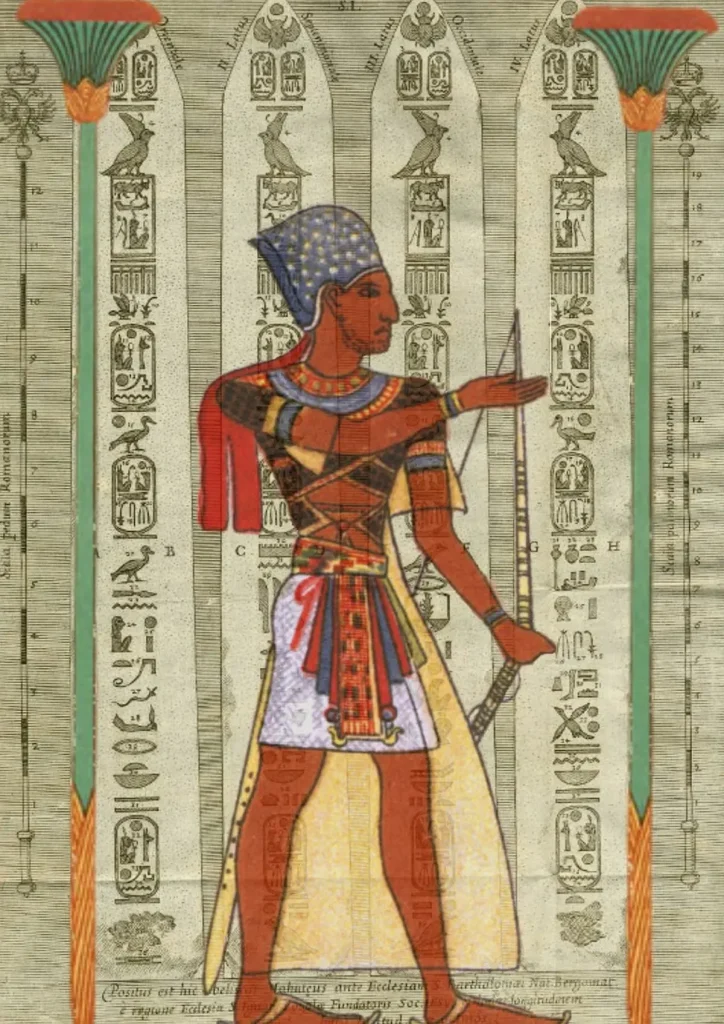
Male Ancient Egyptian Clothing
The ancient Egyptian male clothing was plain and made in accordance with the hot and dry climate. The shenti was one of the most popular types of clothes worn by men: this was a linen skirt that was wrapped around the waistline and secured by means of a belt or a sash. Men of all classes wore the shenti, but the quality of the linen also varied greatly. To the richer, finer linen was employed and these garments were frequently embroidered or beaded.
On special occasions or formal occasions, richer men would wear the long tunics or robes made of finer and finer linen. Such clothes may be embellished with jewellery and other items like armlets or necklaces to indicate their status. The Tutankhamun sandals of the king, made of gold, adorned with gemstones, are one of the most renowned items of male clothing of the ancient Egyptians. These sandals were not simple walking shoes; they were also a significant element of the Pharaoh’s royal garments demonstrating his might and divine affiliation.
Female Ancient Egyptian Clothing
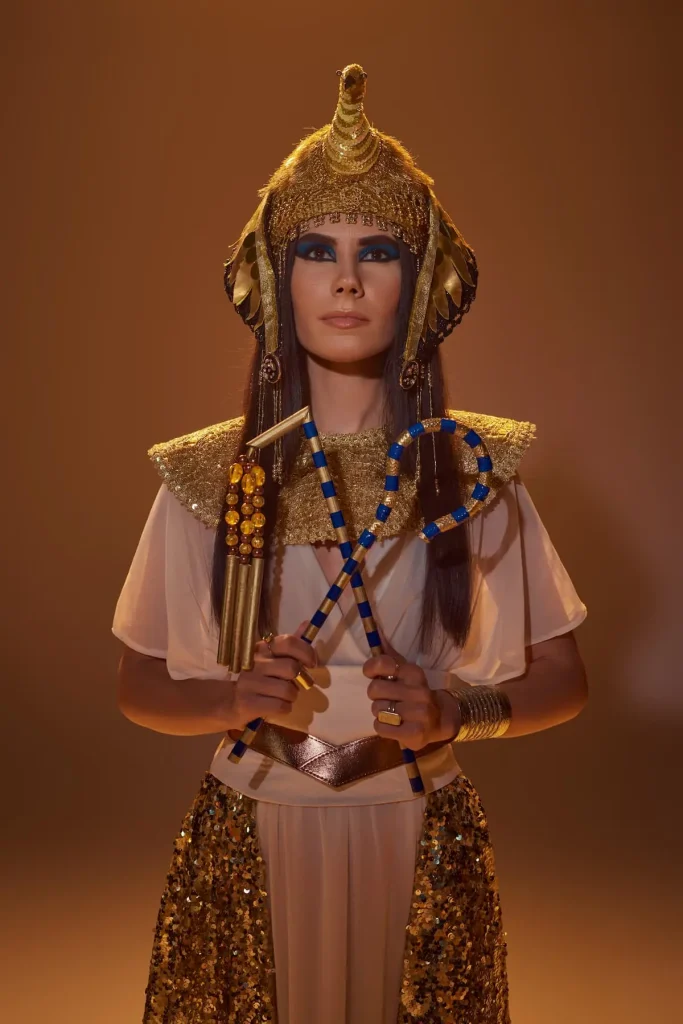
Female Ancient Egyptian Clothing
The sheath was the most common dress worn by women in Ancient Egypt. The sheath dress was linen and was tight to the figure, exposing the body of the wearer. It was generally sleeveless and straps were placed over the shoulders, which made it perfect in the hot weather. Dresses of rich women were more fancy, occasionally beaded, embroidered or of colored linen. These clothes were designed to portray their status, and they were deemed to be elegant and practical.
Besides the sheath dress, women were also wearing jewellery as a valuable element of ancient Egyptian female clothing. Gold, semi-precious stones and beads were used to make jewellery such as necklaces, bracelets, and earrings. Rich women adorned themselves with more detailed jewellery, and even the lower end of the status would have simpler versions of the jewellery, using either glass, clay, or wood. There were also accessories like headbands and headdresses and these were supposed to be used to signify the wearer being wealthy and beautiful.
Accessories and Adornments in Ancient Egyptian Fashion
In Ancient Egypt, accessories were just as important as the clothing itself. Jewelry, wigs, and cosmetics were all essential parts of Ancient Egyptian fashion and were used to express personal identity and social status.
Ancient Egyptian Jewelry
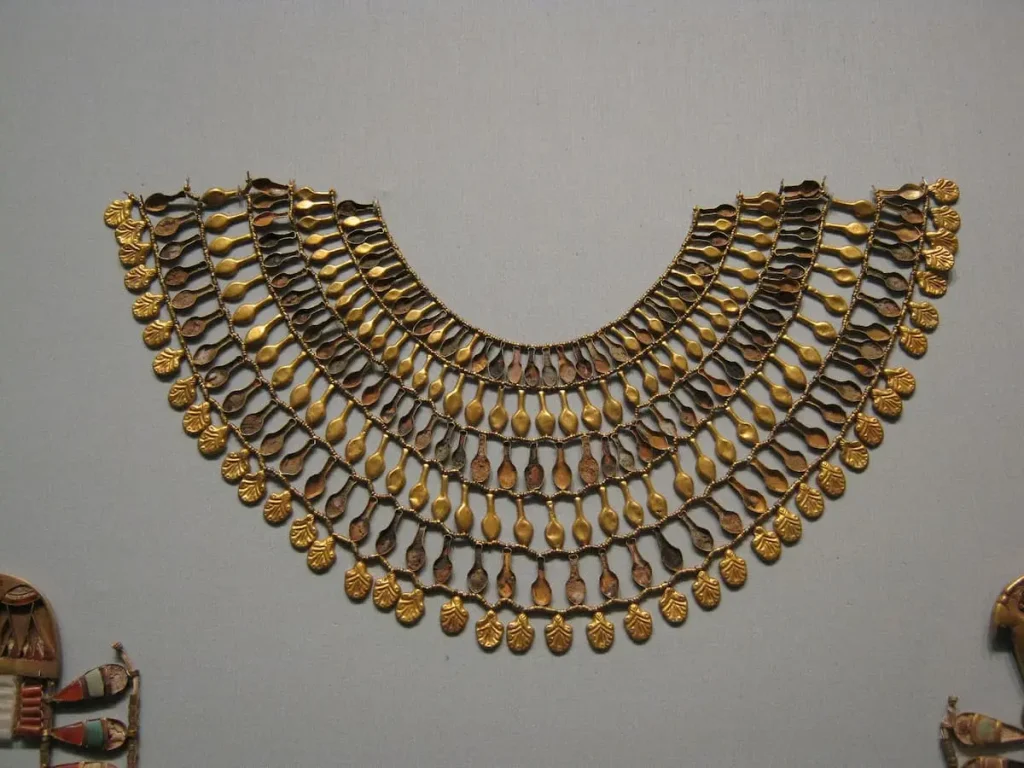
Ancient Egyptian Jewelry
Ancient Egyptian jewellery played a major role as a source of personal decoration among men and women. Gold was the most widespread kind of material utilised, but they made jewellery of semi-precious materials such as turquoise, lapis lazuli and carnelian. All people wore necklaces, rings, earrings, and bracelets of all social classes. The richest Egyptians were the most decorated individuals, as they had huge collars made of beads and the heavy rings worn on their hands which were the symbols of status one had.
The Tutankhamun sandals represent an ideal illustration of the way jewellery and clothing were combined in Ancient Egypt. These were not ordinary sandals but were of gold and were decorated with gemstones hence they represented the divine and royal position of the Pharaoh.
Wigs and Hairstyles

Egypt, Wigs
Wigs were prevalent in Ancient Egypt and were mostly used among the rich and the elite. Wigs could be prepared out of human hair and wool or plant fibre and carefully trimmed to indicate the social status of the wearer. Wigs were worn by both genders, though mostly the women. Others were adorned with beeswax cones which were melted and resulted in fragrance, enhancing the luxury of their wigs. Wigs also served as a means of beauty as well as utilitarianism, as it was necessary to cover the head against the sun and keep the hair on the head clean.
Cosmetics

Egyptian cosmetic set
Ancient Egyptian fashion involved the use of cosmetics. Both men and women also applied kohl to their eyes to cover their eyes against the glare of the sun and avoid eye infection. Kohl was frequently put on in dramatic designs to emphasise the eyes. The red ochre was also used by women as lipstick and this made their lips look rich. Applicability: Cosmetics in Ancient Egypt were a ritual and were closely linked with beauty and security.
Ancient Egyptian Sandals
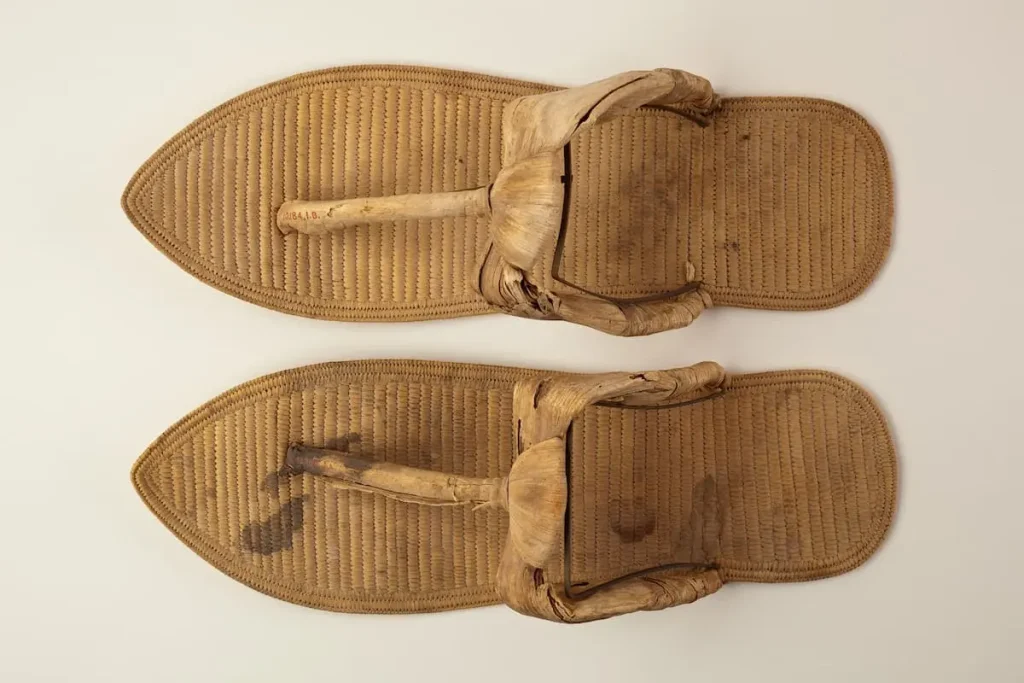
Pair of Sandals
The shoes worn in Ancient Egypt were not merely practical but symbolic as well. The elite wore sandals mainly, however, the design and material used differed significantly according to social status. The majority of the common people used to walk bare-footed, while the rich and members of the royalty wore sandals that were made of different materials such as papyrus, leather and wood.
The Iconic Tutankhamun Sandals
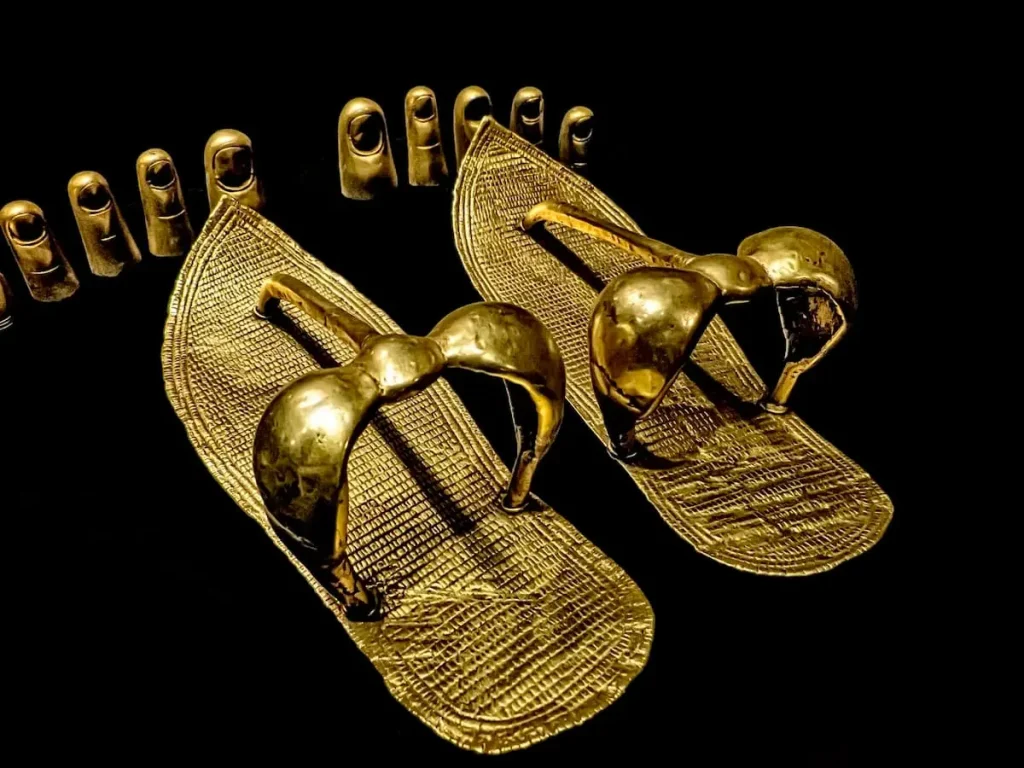
King Tutankhamun’s gold sandals
The Tutankhamun sandals are one of the most renowned Ancient Egyptian sandals. Such sandals were found in the tomb of King Tutankhamun and they are made of gold and have complicated patterns with precious gemstones. They were more than just shoe, as the sandals were a symbol of divine status and the wealth of King Tut. They were not only comfortable, but they were a symbol of royal power and therefore one of the most recognisable elements of Egyptian fashion. The sandals of Tutankhamun are the best of the luxury in Ancient Egyptian footwear.
Symbolism of Color in Ancient Egyptian Clothing
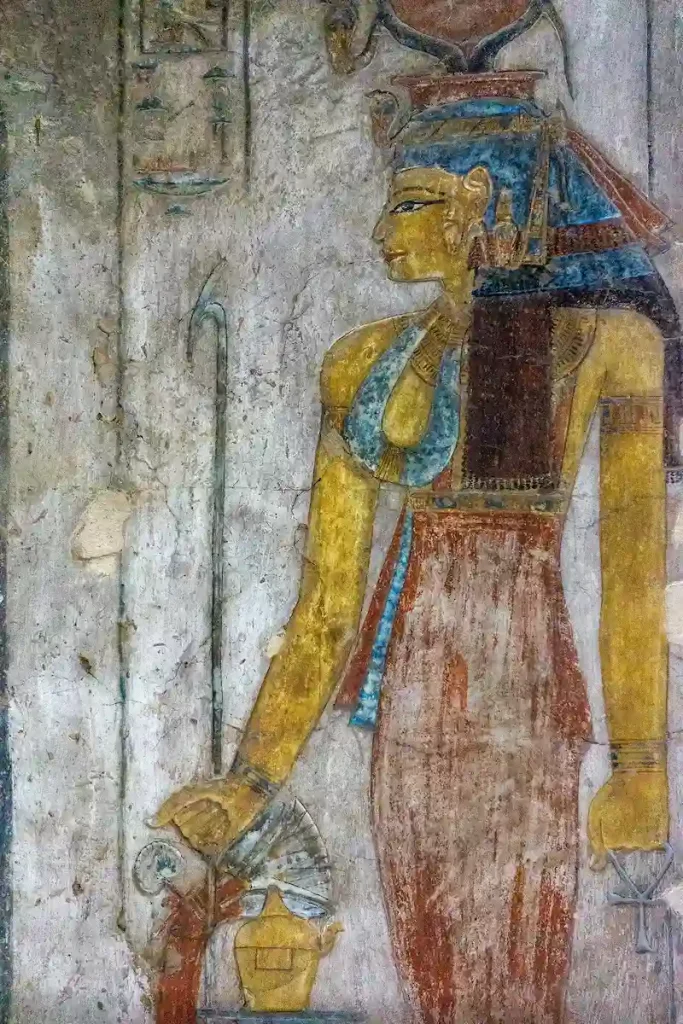
Colorful Clothing
In Ancient Egyptian clothing, color wasn’t just a visual choice—it had deep symbolic meanings. White, often made from linen, represented purity and was commonly worn by priests, Pharaohs, and the elite. Red, on the other hand, was associated with chaos and was often used in ritual clothing. Green symbolized fertility, while black was linked to the afterlife and resurrection. Blue was the color of the heavens and the gods, often worn by the Pharaoh or used in garments meant for divine rituals.
The symbolism of color extended beyond aesthetics. The colors chosen for a garment could represent the wearer’s connection to specific deities or elements of nature. The Pharaoh’s clothing, for example, often featured colors that symbolized his divine power. By wearing certain colors, Egyptians believed they could invoke the strength of the gods.
Clothing and Social Status in Ancient Egypt
In Ancient Egypt, social status was clearly expressed in clothes. The richer an individual was, the more luxurious their clothing. The elite dressed in clothes made of the best linen, and usually decorated with gold, jewellery, and beadwork. A basic piece of clothing was the shenti, which was worn by men and women, yet the richness and adornment distinguished the wealthy and the ordinary people. An example is the Pharaoh, who would adorn himself with fancy robes and headdresses out of fancy material, which made it clear that he was the ruler of Egypt and the spokesman of the gods on Earth.
A good example of how clothing and accessories showed the social status of ancient times in Egypt is the Tutankhamun sandals. These were not ordinary sandals to walk around with, it was a sign of the divine and royal status of the Pharaoh. Ordinary citizens, in their turn, put on simpler sandals or even went bare-footed because they did not have as much access to the luxurious materials.
Funerary Clothing and Ritual Attire
In Ancient Egypt, clothing played a significant part in funerals. The Egyptians were convinced of the afterlife and death was only another phase of life. The funerary clothing in ancient Egypt was meant to make the afterlife a safe journey to the deceased. The body was wrapped in garments made of linen as this was considered pure and holy.
The richer ones could be laid to rest in their best attire, jewellery and accessories such as the Tutankhamen sandals. These were things that were supposed to come with the dead one in the afterlife to offer security and to make sure that he/she will have all he/she will need in their next life. The items of luxury, such as the use of sandals, jewellery, and headpieces, demonstrated the status of the deceased and guaranteed that he/she would have a successful journey to the next world.
The Influence of Ancient Egyptian Clothing on Modern Fashion
Ancient Egyptian fashion is still seen in contemporary clothing and design. Geometric patterns, high collars, and elaborate beadwork are examples of Egyptian motifs are integrated into modern fashion. The lavish designs of the Tutankhamun sandals have inspired contemporary footwear and especially the luxury brands that appreciate the finer details and use of precious materials.
The fashion of ancient Egypt remains a source of inspiration to designers who use the timeless beauty of Egypt and its magnificence. From jewellery to clothing, Egyptian themes have remained applicable and this has proven that clothing styles that were used thousands of years ago are still relevant culturally.
Conclusion
Clothing in ancient Egypt was not merely the issue of surviving in a hot climate, but also a replica of the social organisation and religious beliefs of the society and its values. The plain shenti of common people and the decorated robes of Pharaohs not only represented status, but also religious authority. The fabric of preference was linen, but not merely a very convenient substance, but a symbol of purity. The golden Tutankhamun sandals were the pinnacle of luxury and the right to divine authority of the Pharaoh. The ever-present effects of Egyptian style can be traced in modern-day clothing to this day, which proves that the culture of Ancient Egypt still remains with us.

